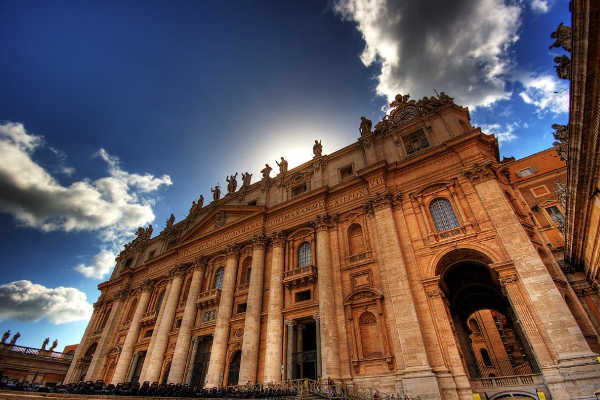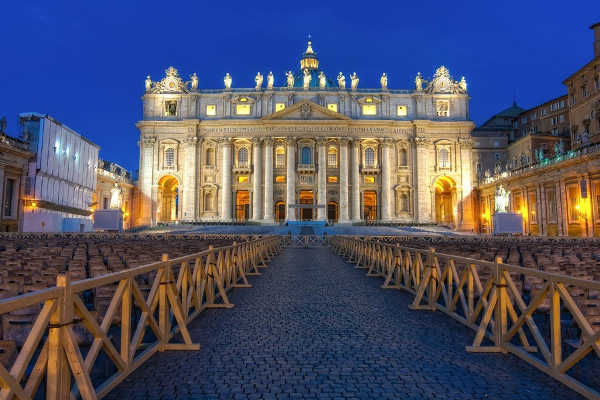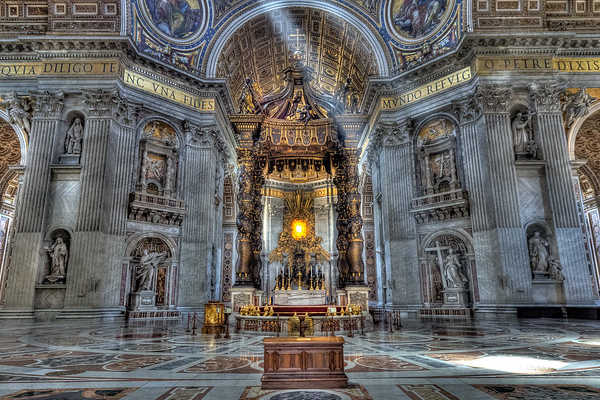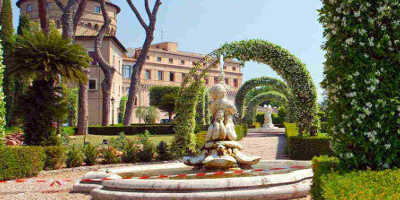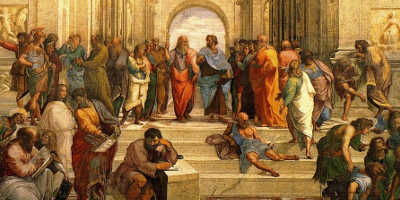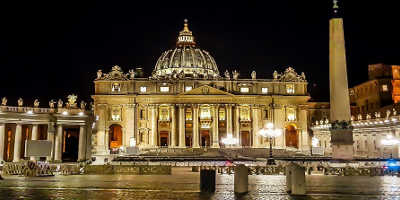St Peter's Basilica, Vatican City
The Papal Basilica of St Peter, known in short as St Peter’s Basilica, is a renaissance church in the Vatican City.
This architectural marvel is the world’s largest Catholic church, and acts as a landmark within the Vatican walls. It is a world-renowned destination and one of the main reasons for people from across the globe to visit Vatican City.
When Was St Peter’s Basilica Built?
The original St Peter’s Basilica was built in the 4th century.
The Original Basilica
The church we know today was not actually the original St. Peter’s Basilica. The original was built in the 4th century by Emperor Constantine, who was the first Christian emperor in Rome. However, the building slowly deteriorated and by the Renaissance period was a crumbling landmark.
The New Basilica
In the mid-15th century, due to a decaying demeanour, the Pope commissioned a replacement on 18 April 1506 and the new St. Peter’s Basilica was completed more than 120 years later. Naturally, this meant that not one person could design and oversee the entire project, as it lasted generations. However, the skilled hands and minds of Donato Bramante, Michelangelo, Carlo Maderno, and Gian Lorenzo Bernini brought this sensational building to life. It is now undoubtedly the world’s most famous piece of renaissance architecture. Capable of housing 20,000 people within its intricately mosaicked walls, St Peter’s Basilica is 190m from end to end and the centre of the dome is a staggering 136m in height. As a work of art, as much as of architecture, St Peter’s Basilica is widely regarded as the greatest building of its age. While its immense size and fame lead many people to name it a cathedral, this is actually incorrect because it isn’t the seat of a bishop.
Why is it named St. Peter
The basilica is named after Peter, one of Jesus’ twelve apostles in the Bible. He originally was known as Simon and was a poor fisherman. He met Jesus near the Sea of Galilee and was the first person to recognise Jesus as the Messiah. Jesus soon changed his name to Peter, which translated to ‘rock.’ Indicating that was the rock on which Christ would build his church. Jesus appointed Peter with the task of looking at the church, making him become the very first Pope of Rome.
The Purpose of St Peter’s Basilica
Though it is a holy meeting place, and an exceptional attraction in the Vatican City, St Peter’s Basilica serves another purpose. It is said to be the final resting place of Saint Peter, whose tomb is rumoured to be directly beneath the high altar of the Basilica. During the 1940s, excavations were done with a discovery of bones in 1953. The bones were said to be belonging to a man in his 60s, which was the same age Peter was documented to be before his death.
Not only did this make it an immensely significant site for Christianity of the past, but it still has an impact on the religious traditions of today, with ceremonial burials of several popes taking place here as well.
The Art within St Peter’s Basilica
The immense church serves as a highlight for art lovers, as every inch of the walls have been painstakingly carved, mosaicked and polished to ensure that the entire building is an artwork in its own right.
Some of the most impressive structures within the Basilica are the altars. Beneath the central dome and standing over the tomb of St Peter is the Baldachin, the bronze canopy that was built by Gian Lorenzo Bernini, the famous Italian sculptor. This canopy is an incredible feat of construction standing at 95ft tall and made from bronze. It was supposed to take 4 years to build but the project lasted for 10 years with Bernini unable to make it stand and running out of bronze. The end result is a masterpiece featuring 4 twisted columns elaborately decorated and exceptionally grand in style to highlight the tomb of St Peter.
Positioned above the altar in the basilica’s apse is the relic of the Chair of St Peter’s and the stunning, golden structure built by Bernini that surrounds it. It was built between 1647-1653 and lifts the chair to hover over the alter. Here it looks as though the light of the Holy Spirit has burst through the wall in an explosion of golden angels and clouds.
Above the Baldachin is one of the Basilica’s most iconic structures, the dome built by Michelangelo. It was the last thing that he built before his death and was completed entirely for free for the glory of god and the salvation of his soul. The dome appears to hover due to the windows that line its base and cast light over the beautiful paintings within. This is supposed to symbolise the separation of heaven and earth and the hovering of the heavens over Peter’s tomb.
St Peter’s Basilica also houses a range of smaller artworks, the most notable of which is Michelangelo’s The Pietà. This exquisite masterpiece is priceless to the Vatican City. It was carved from a single block of marble and depict the body of Jesus in the lap of his mother, Mary, following his crucifixion. In 1972 someone attacked the statues with a hammer and broke Mary’s arm and nose, so it is now displayed behind protective glass.
A trip to Vatican City truly would be incomplete without visiting St Peter’s Basilica. You’ll even have a chance to climb the narrow spiral staircase up to the very top of the dome. From here you can appreciate the city from a new and very unique perspective.

